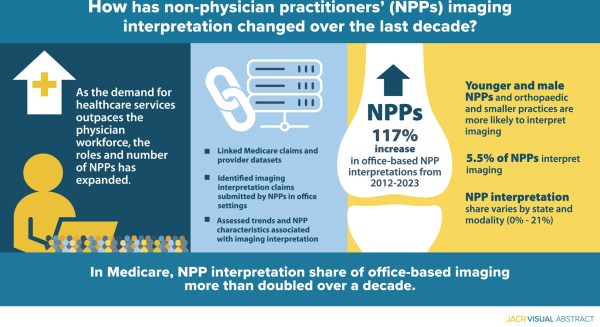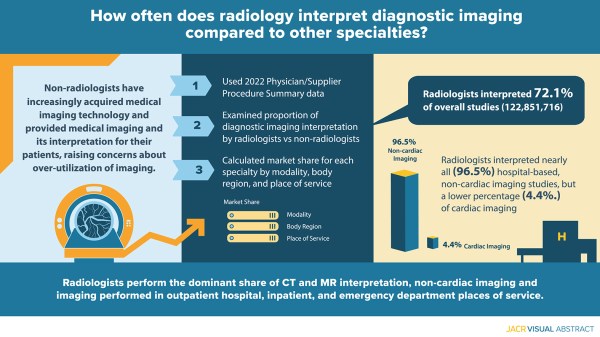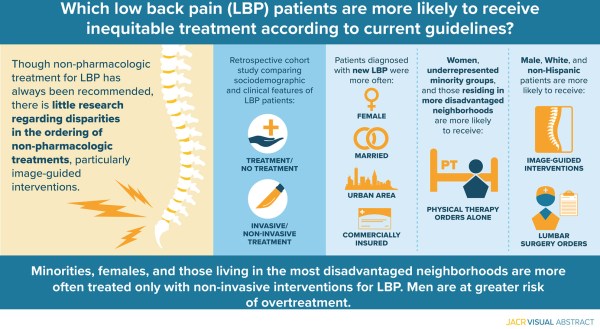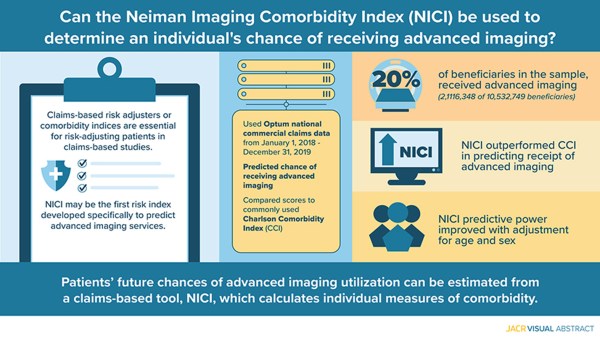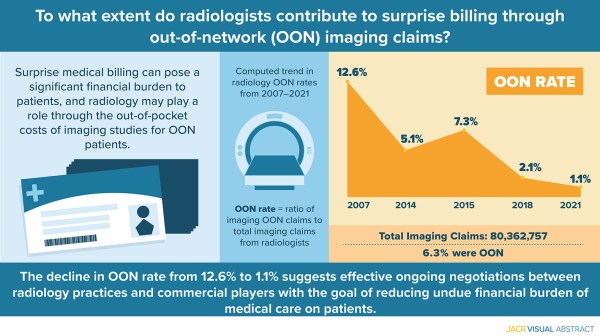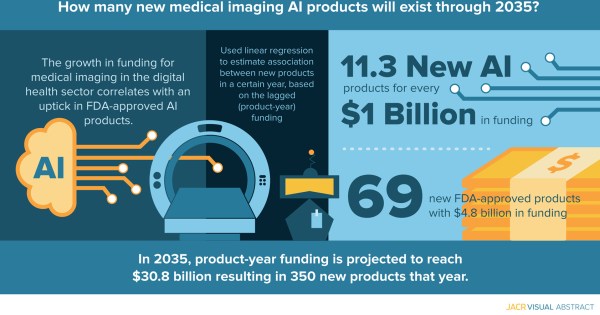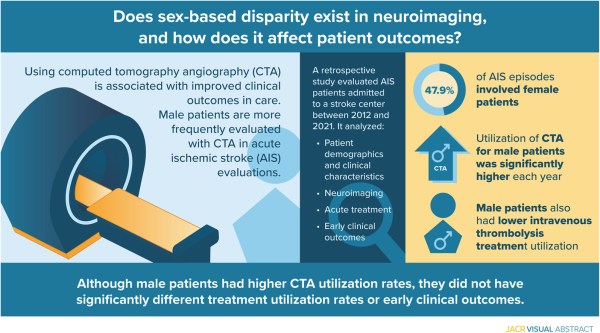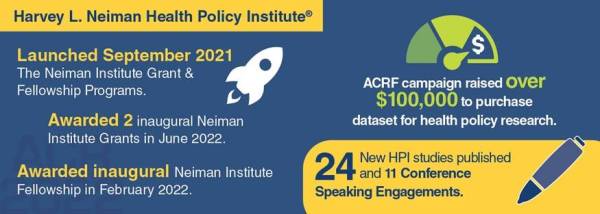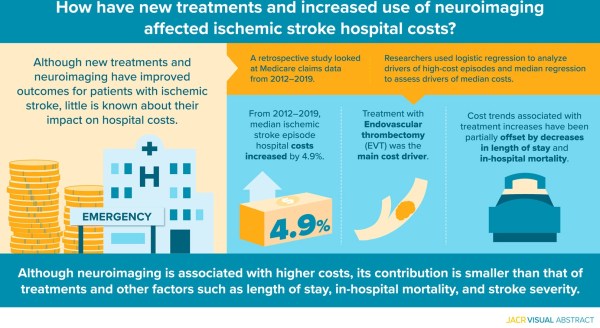January 20, 2025
Diagnostic imaging interpretations by nonphysician practitioners (NPPs) are increasing. With hospital-based imaging overwhelmingly interpreted by radiologists, the researchers studied office-based interpretations by NPPs by their physician employer specialty. View Infographic
June 28, 2024
The aim of this study was to examine radiology’s and other specialties’ market shares for diagnostic imaging interpretation for Medicare fee-for-service claims by modality, body region, and place of service. Authors: Eric W. Christensen, PhD, Elizabeth Y. Rula, PhD, Jeffrey H. Newhouse, MD Read the JACR study for full details.
March 12, 2024
This study assessed individual- and neighborhood-level sociodemographic factors associating with providers’ ordering of nonpharmacologic treatments for patients with low back pain (LBP), specifically physical therapy, image-guided interventions, and lumbar surgery. Authors: Miriam E. Peckham, MD, Lubdha M. Shah, MD, MS, Huong D. Meeks, PhD, MStat, MPH, Alison Fraser, MSPH, Carlos Galvao, BS, Ghazaleh Safazadeh, MPH, View Infographic
February 28, 2024
Detailed Highlights Awarded the Harvey L. Neiman & Richard Duszak Grants to two groups: • Paul Yi, MD, University of Maryland, and Jeremias Sulam, PhD, Johns Hopkins University, for their project on advancing equity in artificial intelligence. • Zachary Bercu, MD; Michal Horny, PhD; Hanzhou Li, MD; and John Moon, MD, Emory University, for View Infographic
January 24, 2024
The Neiman Imaging Comorbidity Index (NICI) is an easily calculated measure of comorbidity burden that can be used to adjust for patients’ chances of receiving advanced imaging. Read the JACR study for full details.
January 19, 2024
Given the financial hardships of surprise billing for patients, the aim of this study was to assess the degree to which radiologists effectively participate in commercial insurance networks by examining the trend in the share of radiologists’ imaging claims that are out of network (OON). Radiologists’ imaging claims that are OON has significantly declined from View Infographic
October 16, 2023
Medical imaging accounts for 85% of digital health’s venture capital funding. As funding grows, it is expected that artificial intelligence (AI) products will increase commensurately. The study’s objective is to project the number of new AI products given the statistical association between historical funding and FDA-approved AI products. Read the JACR study for full details.
August 14, 2023
Gender-Based Disparity in Acute Stroke Imaging Utilization and the Impact on Treatment and Outcomes: 2012 to 2021. Read the JACR study for full details.
June 30, 2023
FY 2022 (July 01, 2021 – June 30, 2022) Top Accomplishments
November 7, 2022
The increased use of neuroimaging and innovations in ischemic stroke (IS) treatment have improved outcomes, but the impact on median hospital costs is not well understood. The JACR retrospective study was conducted using Medicare claims data for 75,525 consecutive index IS hospitalizations for patients aged ≥65 years from 2012 to 2019. Read the study for full details.

